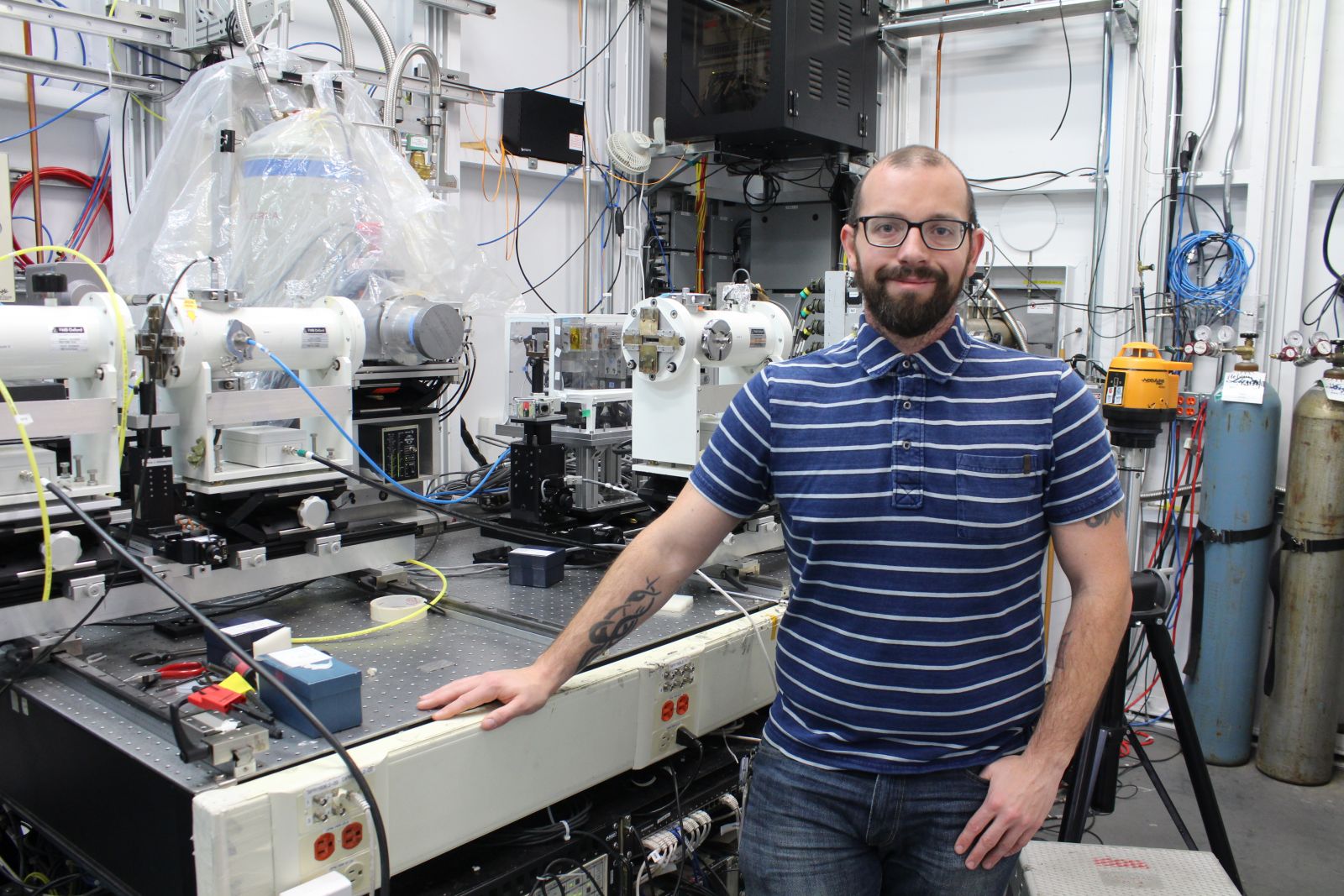Get out your vacuum: Scientists find harmful chemicals in household dust
A team of researchers from the CLS and Memorial University set out to determine whether bromine could be found in household dust.
By Greg BaskyDr. Atanu Sarkar with Memorial University’s Faculty of Medicine conducting an experiment at the CLS.
Since the 1970s, chemicals called brominated flame retardants (BFRs) have been added to a host of consumer and household products, ranging from electronics and mattresses to upholstery and carpets. While they were intended to improve fire safety, one form -- polybrominated diphenyl ethers, or PBDEs -- has proved harmful to human health, specifically our hormonal systems.
Although the use of PBDEs has been restricted in Canada since 2008, older household electronics and furniture with these compounds are still in use. Additionally, the process used to add this chemical to manufactured goods attached the particles very loosely. As a result, the compound tends to shed over time through normal wear and tear.

A growing body of evidence suggests that concentrations of this chemical are higher indoors and that it is present in dust. A team of researchers from the Canadian Light Source (CLS) at the University of Saskatchewan and Memorial University set out to determine whether they could find bromine in household dust using synchrotron X-ray techniques.
By identifying the presence of bromine, they could confirm if people are in fact getting exposed to the chemical at home, either by direct physical contact or by inhaling it. The scientists tested twenty dust samples collected from houses in rural Newfoundland using the VESPERS beamline at the CLS.
Dr. Peter Blanchard with the CLS said his team was uncertain, going in, whether bromine concentrations in their samples would be high enough to register, and if so, whether they could then distinguish between different bromine species. They scored wins on both counts: “We were able to show that there was a noticeable amount of bromine present in all of the dust samples we analyzed and in a select few we were able to identify bromine species that were characteristic of brominated flame retardants,” said Blanchard. Previous studies have not been able to differentiate brominated flame retardants from other brominated compounds.
Study co-author Dr. Atanu Sarkar, who works in Memorial University’s Faculty of Medicine, said their findings present something of a choice between bad and worse: safety from fire versus another type of hazard. He acknowledged that it is not feasible for people to rid their homes of all products and materials containing BRFs.
“But if dust is one source of our exposure, how can you reduce this exposure?” said Sarkar. “Public awareness is very important. Maybe we need more frequent vacuuming of all the dust.”
Their findings point to the need to identify -- and make consumers more aware of -- safer alternatives that are free of brominated compounds. The team recently published their results in Environmental Science and Pollution Research.
The scientists added that one of the biggest benefits of using the CLS for this type of research is that, unlike other commonly used testing equipment, the synchrotron-based XRF and XANES techniques do not destroy dust samples.
Therefore, it will be possible to collect samples from the same households down the road, to compare them with the batch used in this study, and to analyze the current samples five or ten years out, to see how the BRFs chemicals in our homes may change over time.
Blanchard, Peter, Nicole Babichuk, and Atanu Sarkar. "Evaluating the use of synchrotron X-ray spectroscopy in investigating brominated flame retardants in indoor dust." Environmental Science and Pollution Research (2020): 1-7. DOI: 10.1007/s11356-020-10623-4.
For more information, contact:
Victoria Schramm
Communications Coordinator
Canadian Light Source
306-657-3516
victoria.schramm@lightsource.ca
